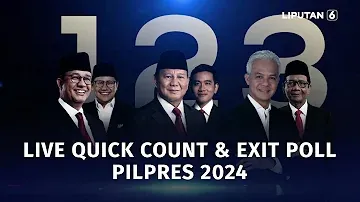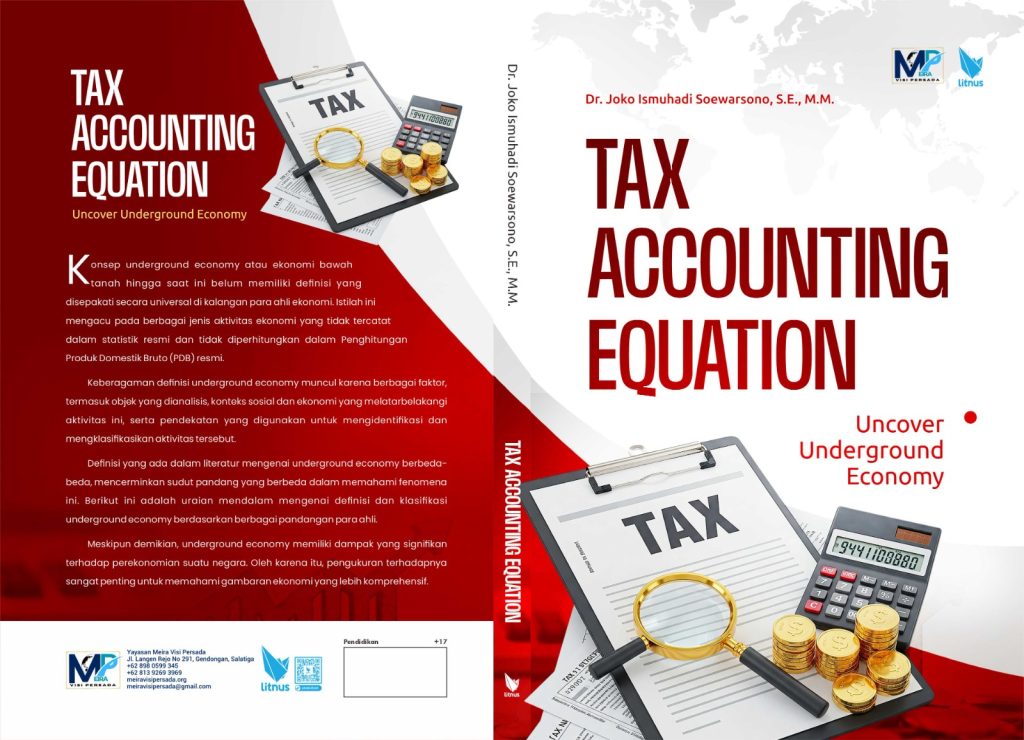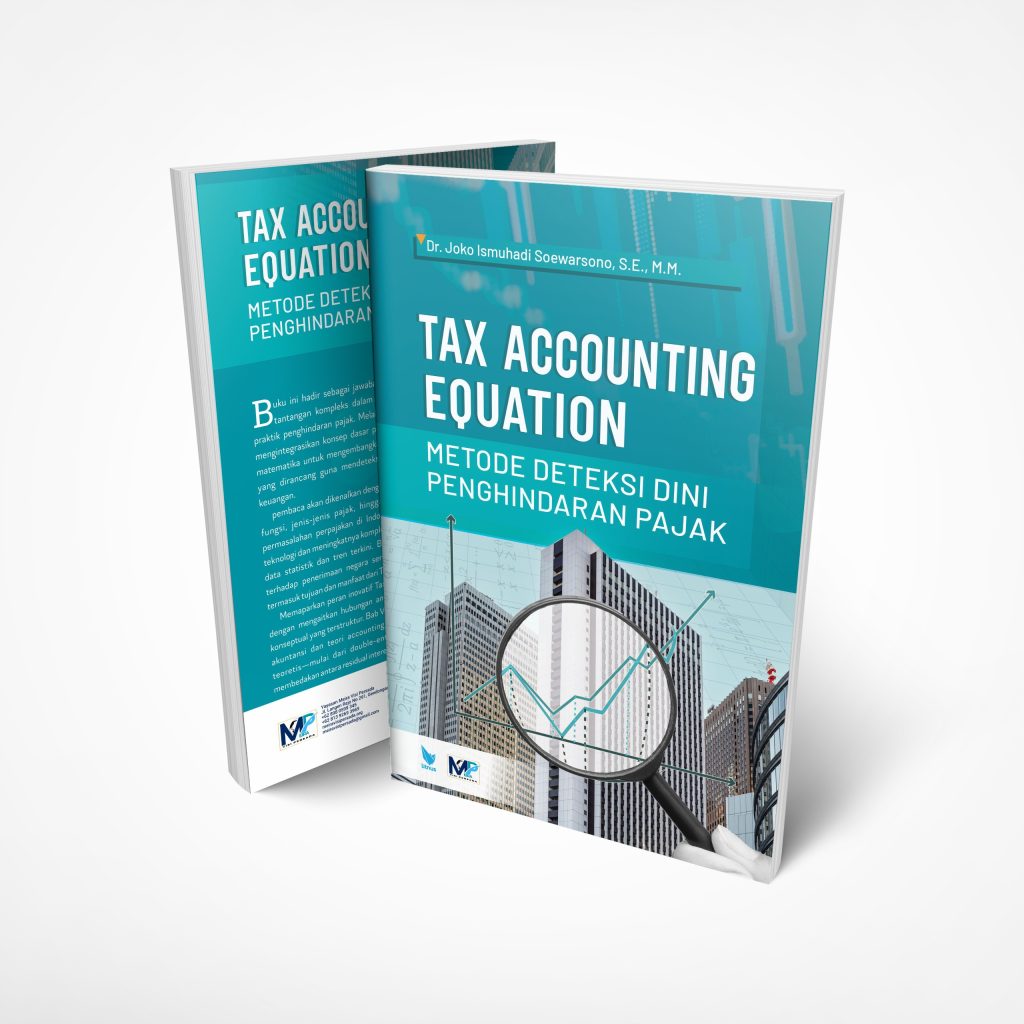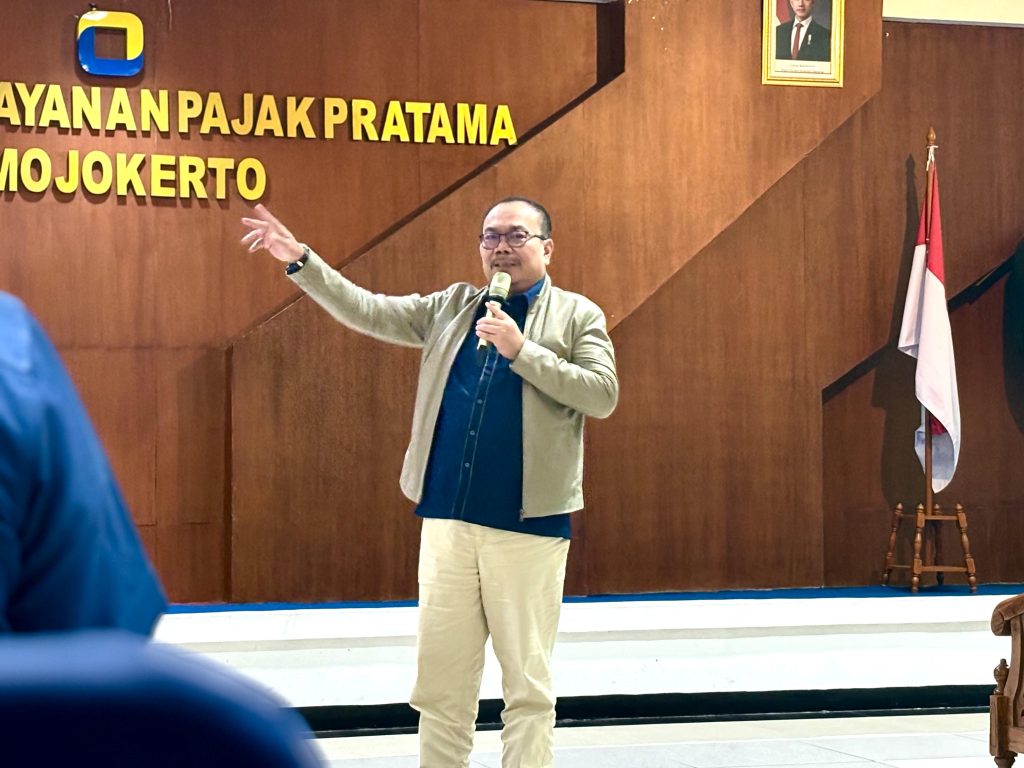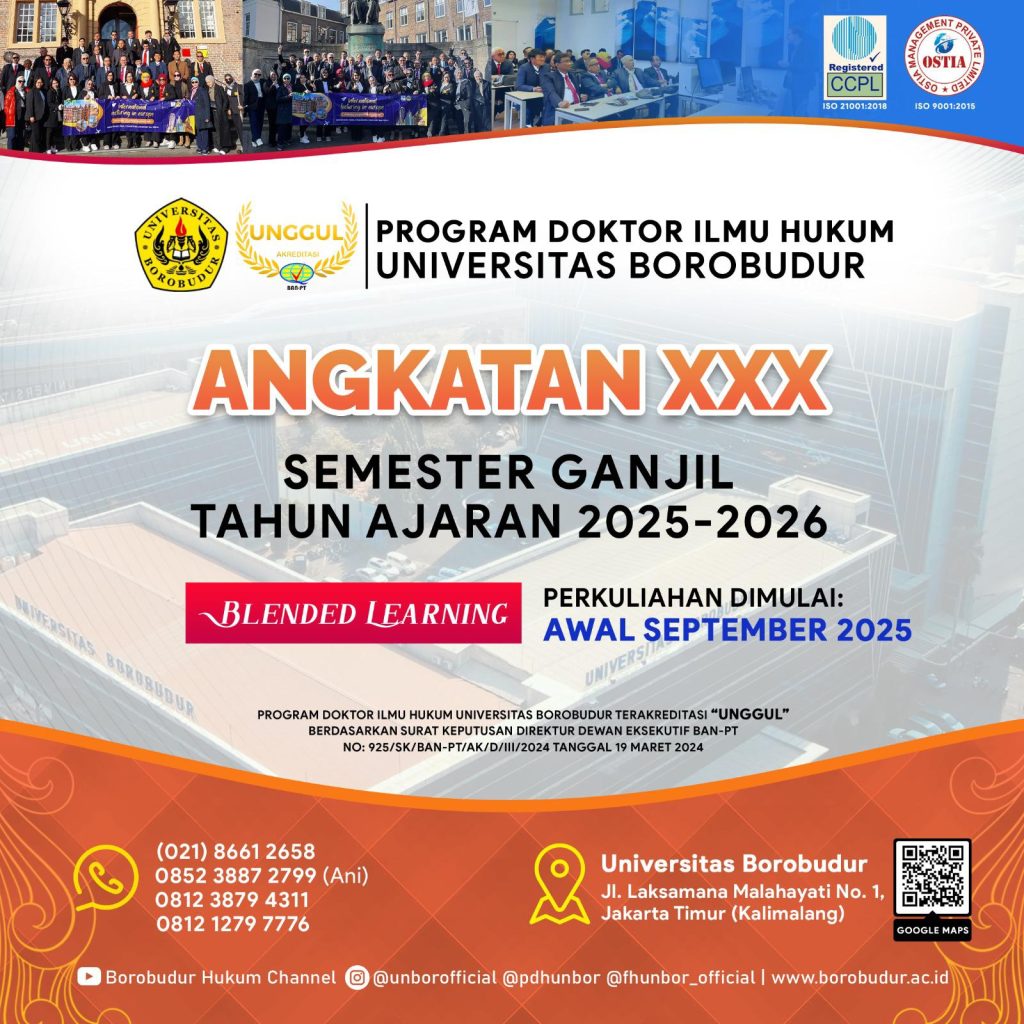
Dr. Joko Ismuhadi’s Tax Accounting Equation: A Novel Approach to Detecting Financial Irregularities in Indonesia
- Ekonomi
Friday, 09 May 2025 12:50 WIB

Jakarta, fiskusnews.com:
Introduction: The Imperative for Enhanced Tax Compliance in Indonesia
Indonesia faces persistent challenges in maintaining robust tax compliance, with tax avoidance, embezzlement, and the pervasive underground economy significantly impacting the nation’s fiscal health and hindering economic advancement. Evidence suggests a considerable gap between the country’s tax collection and its economic potential, as indicated by a tax ratio that lags behind many of its Asian counterparts. This lower tax ratio, where Indonesia collects around 10% of its Gross Domestic Product (GDP) in taxes, approximately half the regional average, underscores the pressing need for innovative strategies to improve revenue mobilization. The sophistication of tax evasion schemes employed by companies and high-net-worth individuals further complicates the efforts of tax authorities to ensure fair and equitable tax collection. To address these intricate issues, Dr. Joko Ismuhadi, an Indonesian tax specialist, has introduced the Tax Accounting Equation (TAE), a pioneering tool that leverages mathematical principles to analyze financial reporting and identify potential discrepancies indicative of financial irregularities. This novel approach adapts the fundamental accounting equation to the specific context of Indonesian tax analysis, offering a more advanced method for tax authorities to detect potential tax evasion. The development of TAE signifies a crucial step towards fostering a more rigorous, forensic, and data-driven methodology for tax enforcement within Indonesia.
Deconstructing the Tax Accounting Equation (TAE): Principles and Formulation
The bedrock of financial accounting is the fundamental accounting equation: Assets = Liabilities + Equity. This equation represents the balance between a company’s resources (assets) and the sources of its financing, either through borrowing (liabilities) or investments from owners (equity). While this equation is foundational for understanding a company’s financial position at a specific point in time , its general nature may not be sufficiently equipped to uncover the often intricate and concealed methods used in sophisticated tax evasion and the disguising of economic activities. Tax avoidance and evasion often involve manipulating revenue and expense accounts over reporting periods, necessitating analytical tools that can scrutinize these dynamic elements more directly.
In response to these limitations, Dr. Ismuhadi has formulated the Tax Accounting Equation (TAE) and the Mathematical Accounting Equation (MAE), which are specifically designed for tax analysis, particularly within the Indonesian context. The TAE is presented in two interrelated formulations :
- Revenue – Expenses = Assets – Liabilities
- Revenue = Expenses + Assets – Liabilities
These formulations represent a strategic rearrangement of the basic accounting equation, with a deliberate emphasis on revenue as a crucial indicator of a company’s economic activity and its consequent tax obligations. By focusing on the relationship between a company’s profitability, as reflected in the income statement (Revenue – Expenses), and its net worth, as shown on the balance sheet (Assets – Liabilities), TAE aims to provide tax authorities with a more targeted lens for identifying potential tax irregularities. Furthermore, for specific scenarios where taxable income might be intentionally reported as zero or negative to minimize tax liabilities, Dr. Ismuhadi has also formulated the Mathematical Accounting Equation (MAE) as: Assets + Dividen + Beban = Kewajiban + Ekuitas + Pendapatan. This variation is tailored to analyze situations where traditional income-focused equations might not reveal the full picture of potential tax avoidance.
The underlying mathematical principle of these equations is to establish an expected equilibrium between key financial reporting components and a company’s tax obligations. By mathematically linking revenue, expenses, assets, and liabilities, TAE provides a framework for tax authorities to quantitatively assess financial statements. Significant deviations from these anticipated relationships can then serve as indicators of potential tax avoidance or even fraudulent activities. For instance, an unusual increase in assets without a corresponding increase in reported revenue or equity might suggest hidden income. Similarly, a disproportionately high level of liabilities compared to reported revenue could indicate that income is being masked as debt to reduce the tax burden.
| Equation Name | Formula | Primary Focus/Purpose | Creator/Origin |
|---|---|---|---|
| Basic Accounting Equation | Assets = Liabilities + Equity | Fundamental relationship between a company’s resources and obligations | Generally accepted principle |
| Expanded Accounting Equation | Assets + Draw + Expenses =…source of revenue to cover costs and contribute to net assets for tax analysis; Inverse relationship between Revenue and Liabilities | Dr. Joko Ismuhadi Soewarsono | |
| Mathematical Accounting Equation (MAE) | Assets + Dividen + Beban = Kewajiban + Ekuitas + Pendapatan | Designed for scenarios where taxable income might be zero or negative | Dr. Joko Ismuhadi Soewarsono |
Applications of TAE for Proactive Tax Irregularity Detection
Dr. Ismuhadi’s Tax Accounting Equation offers several critical applications for tax authorities seeking to proactively detect financial irregularities. One of the primary benefits of TAE is its capacity for the early detection of potential tax avoidance schemes. By analyzing the financial statements of taxpayers through the lens of TAE, tax officials can identify inconsistencies that might suggest intentional misreporting of revenue or expenses. For example, if a company reports significantly low revenues or inflated expenses while simultaneously showing an unexplained increase in assets, TAE can flag this discrepancy as a potential indicator of tax evasion. This ability to pinpoint anomalies in the fundamental relationships between financial elements allows tax authorities to identify potential issues before they escalate into substantial tax losses.
Furthermore, TAE plays a crucial role in risk assessment by enabling tax authorities to prioritize audits and investigations based on the likelihood of irregularities. The significant variances from the expected relationships defined by TAE can serve as red flags, directing audit efforts towards entities where the risk of tax evasion is higher. This targeted approach to risk assessment allows for a more efficient allocation of audit resources, maximizing the potential for uncovering tax fraud and enhancing the overall effectiveness of tax enforcement. Instead of relying on random audits, which can be resource-intensive, TAE provides a data-driven method to focus on companies exhibiting suspicious financial patterns.
Another significant application of TAE lies in its potential for uncovering hidden economic activity and the movement of legal activities into the underground economy for tax evasion. By identifying discrepancies between reported financial data and expected tax obligations, TAE can provide valuable insights into the scale and nature of the underground economy. For instance, if a company’s reported revenue is insufficient to support its reported expenses and asset growth, this could indicate the presence of unreported income from hidden economic activities. TAE’s focus on revenue as a key indicator of economic activity allows tax authorities to scrutinize the logical alignment between reported revenue and other financial elements, directly addressing the core of tax evasion, which often involves underreporting income.
TAE as a Novel Forensic Accounting Tool Tailored for Indonesia
Dr. Ismuhadi’s Tax Accounting Equation is particularly relevant and designed for the Indonesian financial and regulatory landscape. Developed by an Indonesian tax expert, TAE takes into account the specific challenges and characteristics of the Indonesian economy, including the prevalence of the underground economy and various tax evasion tactics. This tailored approach distinguishes TAE from generic accounting analysis tools, making it potentially more effective in the Indonesian context. Dr. Ismuhadi’s deep understanding of the Indonesian tax system, likely informed by his experience within the tax authority , has been instrumental in developing an equation that targets specific financial reporting patterns and manipulations commonly observed in Indonesia.
Deviations from the expected relationships identified by TAE can serve as strong indicators of potential tax evasion or fraudulent activities. For example, an unusually high level of liabilities relative to reported revenue growth could suggest that a company is intentionally misclassifying income as debt to reduce its tax burden. This tactic might involve the use of related party transactions to obscure the true nature of financial flows. Similarly, inconsistencies between a company’s reported profitability and its net worth, as highlighted by TAE, can signal potential manipulation of financial statements to evade taxes. For instance, a company reporting low profits but showing a significant increase in assets might be concealing income or underreporting its true financial performance. The use of clearing accounts to temporarily misrecord revenues as liabilities or expenses as assets is another example of a deceptive practice that TAE is designed to detect. By focusing on these specific indicators, TAE offers a more focused and effective approach to forensic tax analysis in Indonesia.
The Potential Impact of TAE on Tax Administration and Enforcement in Indonesia
Dr. Ismuhadi’s Tax Accounting Equation holds significant potential for transforming tax administration and enforcement in Indonesia. By providing a mathematically rigorous framework for analyzing financial data, TAE can contribute to a more sophisticated, forensic, and data-driven approach to combating tax evasion. This novel tool enables tax authorities to move beyond traditional qualitative assessments of financial statements towards a quantitative methodology for identifying potential irregularities. The structured nature of TAE allows for a more objective and systematic analysis, potentially uncovering instances of tax avoidance and embezzlement that might be missed by conventional methods.
There appears to be a growing recognition within Indonesia of the potential benefits of integrating TAE into the existing methodologies used by the Indonesian tax authorities (Direktorat Jenderal Pajak or DJP) for tax assessment, audit, and investigation processes. Dr. Ismuhadi himself intends for TAE to be a valuable analytical tool for the DJP in their examination of taxpayer financial statements. His engagement with the DJP, including presentations on topics like Underground Economy Activity (UEA) , suggests an ongoing dialogue and a potential pathway for the authorities to consider and adopt TAE as part of their tax enforcement toolkit. The expressed hope that TAE could become a standard tool for Taxpayer Financial Statement Analysis further indicates its potential integration into the DJP’s routine procedures.
The ongoing digitalization of Indonesia’s tax system through initiatives like the CoreTax system presents a significant opportunity to facilitate the application and scalability of TAE for widespread use across the country. The CoreTax system aims to modernize tax administration by integrating taxpayer data with various sources and providing real-time access to financial transactions. This enhanced data infrastructure could enable the DJP to efficiently implement TAE on a larger scale, potentially through the development of automated analytical tools that can apply the equation to vast amounts of financial data. Such integration could significantly enhance the DJP’s capacity to detect tax irregularities and improve overall tax compliance in Indonesia.
TAE in the Context of Existing Tax Fraud Detection Methodologies in Indonesia
Dr. Ismuhadi’s Tax Accounting Equation offers a unique approach to tax fraud detection in Indonesia when compared to existing methodologies. Traditional tax audit techniques employed by the DJP include both direct and indirect methods. Direct methods involve the examination of books, records, and documents related to specific income or expense items. Indirect methods, on the other hand, utilize various approaches like the cash transaction and bank deposit method to assess the reasonableness of reported income. While these methods are essential for tax enforcement, they can be time-consuming and may not always uncover sophisticated tax evasion schemes.
In recent years, emerging technologies like Artificial Neural Networks (ANN) are being explored for the early detection of tax evasion in Indonesia. ANN systems can analyze large datasets of financial and taxpayer behavior to identify patterns and anomalies that might indicate fraudulent activities. The DJP is also leveraging advanced data analytics, including machine learning algorithms, to detect suspicious patterns in tax data. While these technologies offer powerful capabilities for analyzing vast amounts of data, TAE provides a specific, mathematically derived equation-based approach that can complement these methods. TAE focuses on the fundamental relationships between key financial variables, offering a targeted lens for identifying potential irregularities that might be missed by broader data analysis techniques or traditional audit methods.
TAE can enhance the effectiveness of current tax enforcement strategies by providing an additional layer of analysis centered on the core relationships within financial statements. By specifically examining the mathematical balance between revenue, expenses, assets, and liabilities, TAE can uncover inconsistencies that might not be apparent through other forms of financial analysis or traditional auditing procedures. This focused approach adds a valuable dimension to the tax enforcement toolkit, allowing tax authorities to more effectively target their resources and improve the detection of hidden income and other tax evasion tactics.
Expert Perspectives and Scholarly Recognition of Dr. Ismuhadi’s Work
Dr. Joko Ismuhadi’s Tax Accounting Equation has garnered considerable attention within Indonesian news media and appears to be gaining recognition in academic and professional circles. Numerous news articles highlight TAE as a novel approach to detecting financial irregularities and tax avoidance in Indonesia. These publications emphasize its potential as a forensic accounting tool tailored for the Indonesian context. The consistent media coverage suggests a perceived significance and novelty of Dr. Ismuhadi’s work in addressing the challenges of tax evasion within the country.
Furthermore, Dr. Ismuhadi’s engagement with the Directorate General of Taxes (DJP) and his presentations at academic seminars indicate that his research is being considered by both tax practitioners and scholars. He is also identified as an academic member of key tax and legal expert associations in Indonesia , further solidifying his position as a recognized expert in the field. While one article suggests the absence of explicit expert opinions on TAE , the broader evidence points towards a growing acknowledgment of its potential value within the Indonesian tax and accounting communities. Public discussions on platforms like YouTube also highlight the perceived potential of TAE to modernize accounting methodologies and combat tax evasion.
Despite the considerable interest and discussion surrounding TAE, widespread adoption and integration into standard practices by Indonesian tax authorities might require further evaluation and validation. Although there is hope for TAE to become a standard tool for financial statement analysis , official confirmation of its formal adoption as a policy by the DJP is not explicitly stated in the provided material. The identification of potential ambiguities in Indonesian tax law related to debt reduction , an area where TAE could offer valuable insights, suggests that further dialogue and assessment within the professional community are likely necessary before widespread implementation occurs.
Conclusion: Advancing Tax Compliance and Combating Financial Crime through Innovative Accounting Analysis
Dr. Joko Ismuhadi’s Tax Accounting Equation represents a significant innovation in the field of forensic accounting and tax law, particularly within the Indonesian context. By providing a mathematically rigorous framework for analyzing financial statements, TAE offers a novel and data-driven approach to strengthening tax compliance, enhancing tax enforcement, and combating financial crimes in Indonesia. Its focus on the fundamental relationships between revenue, expenses, assets, and liabilities allows for the early detection of potential tax avoidance schemes, more effective risk assessment for audit prioritization, and the uncovering of hidden economic activities contributing to the underground economy.
Reporter: Marshanda Gita – Pertapsi Muda
Share
Berita Lainnya
Ikuti Webinar secara ✨GRATIS! tentang “Panduan Akuntansi BPR sesuai Nomor 21/SEOJK.03/2024”
GITA Menerima Penghargaan “#1 INDONESIA MOST RECOMMENDED AWARDS 2025”
Woro-woro… Woro-woro… Rek!
Rekomendasi untuk Anda

Berita Terbaru
Eksplor lebih dalam berita dan program khas fiskusnews.com
Tag Terpopuler
# #TAE
# #TAX ACCOUNTING EQUATION
# #TAX FRAUD
# #TAX EVASION






